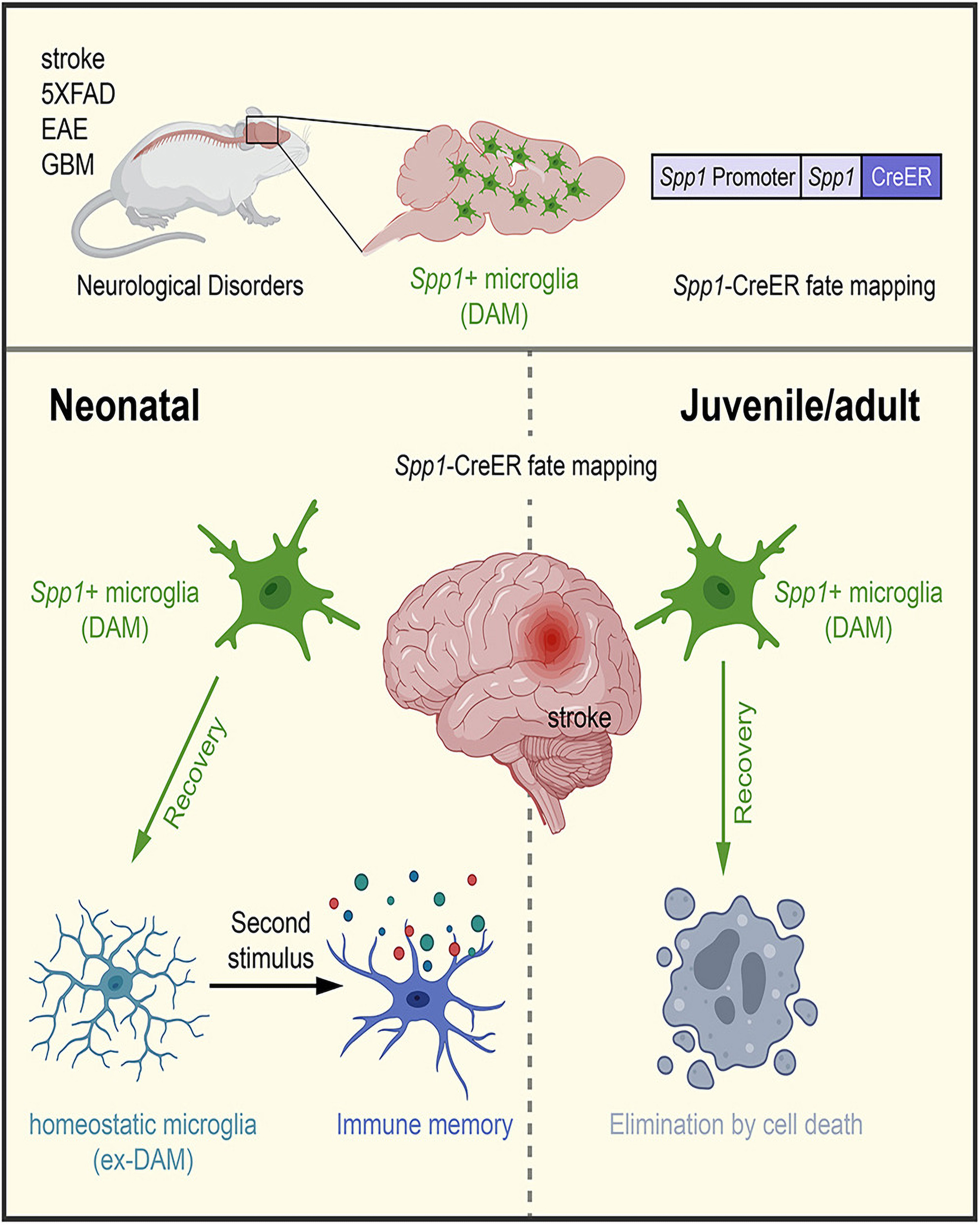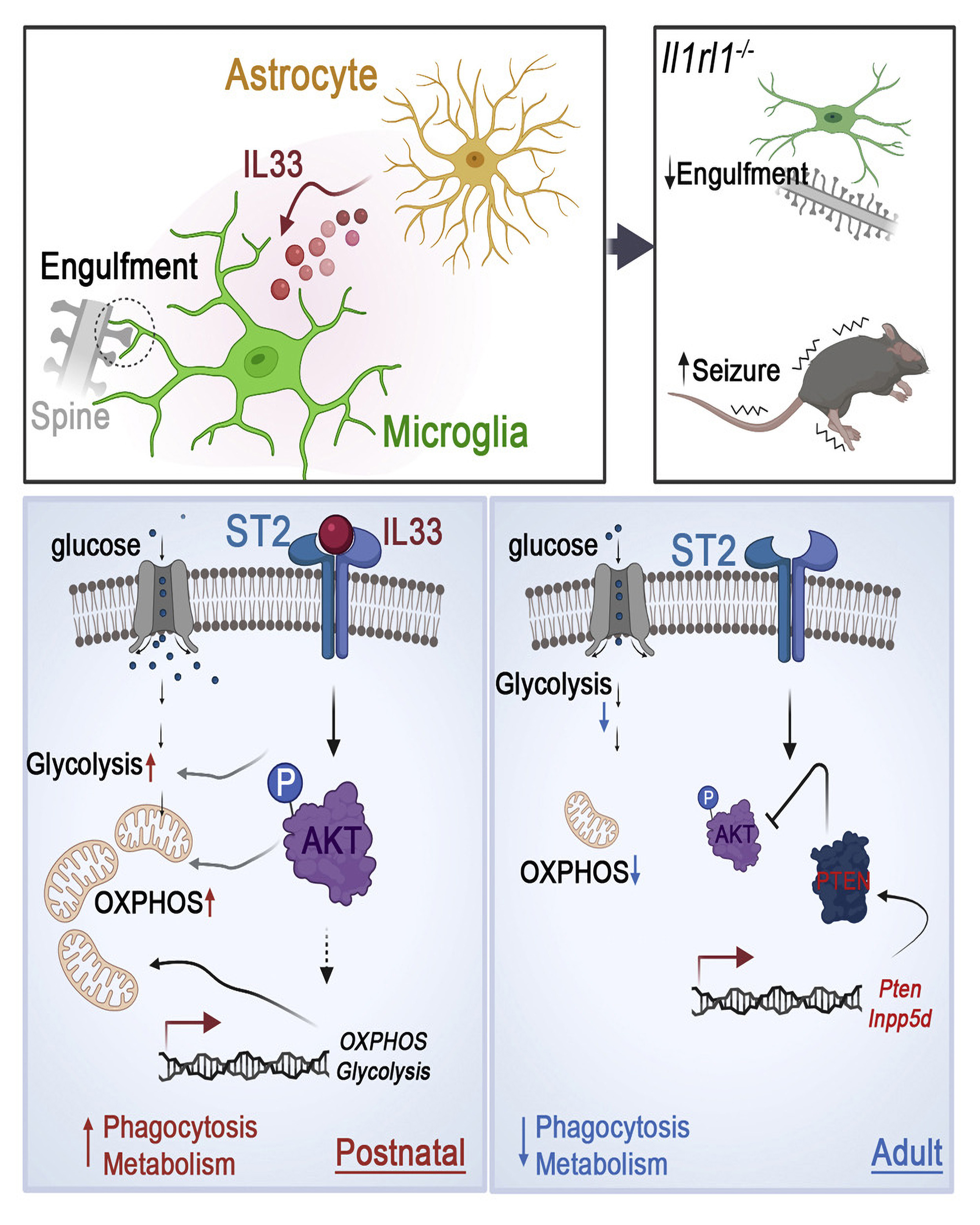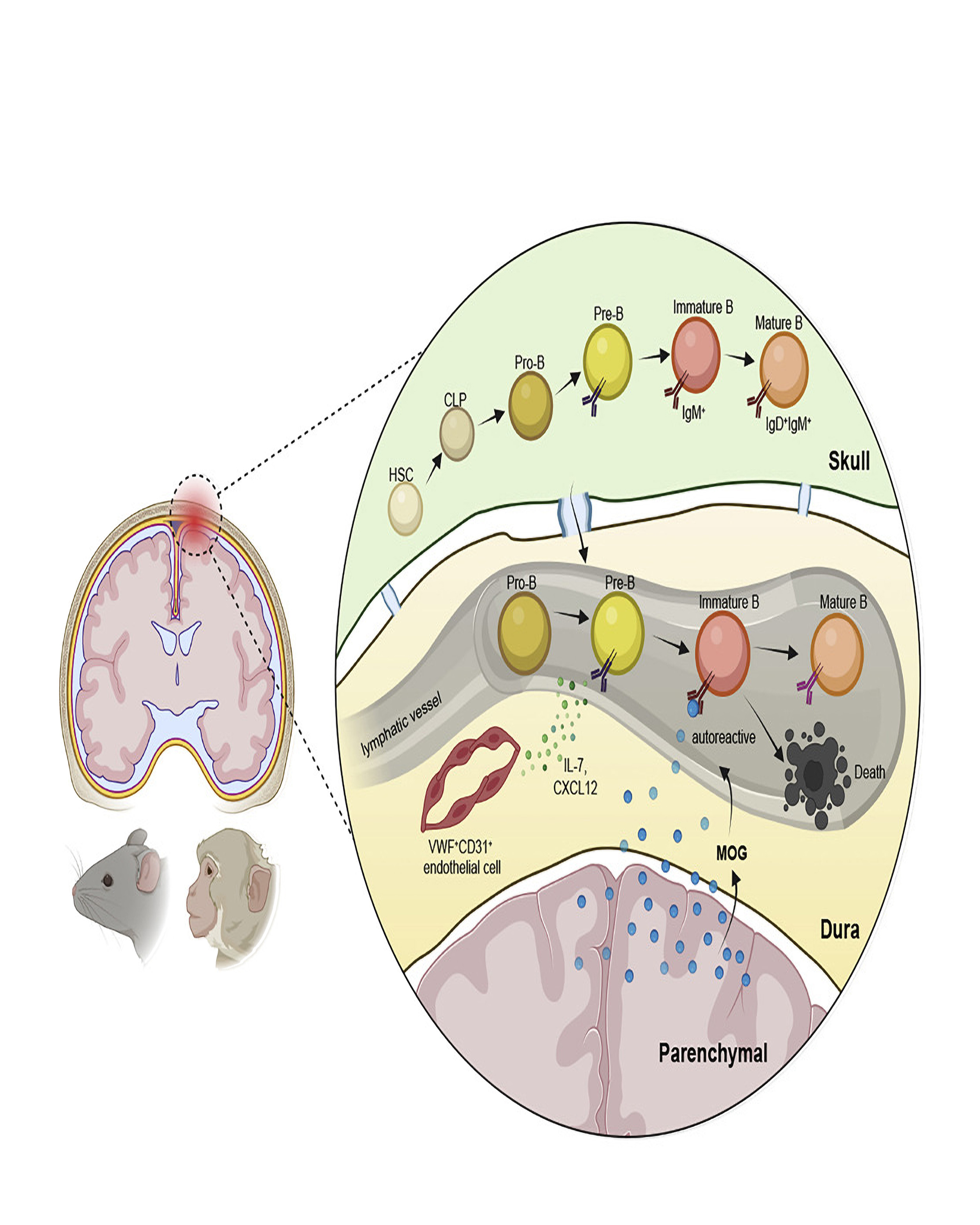Our latest research findings
Fate mapping of Spp1 expression reveals age-dependent plasticity of disease-associated microglia-like cells after brain injury
By establishing a fate-mapping system for disease-associated microglia (DAM) based on Spp1 expression signatures, our study reveals age-dependent plasticity of DAM following brain injury. Crucially, we demonstrate that newborn DAM exhibit heightened plasticity and acquire innate immune memory capabilities.
Disruption of the IL-33-ST2-AKT signaling axis impairs neurodevelopment by inhibiting microglial metabolic adaptation and phagocytic function
Integrated analysis of 10X Genomics and Smart-seq2 single-cell transcriptomics revealed that microglial mitochondrial activity correlates with phagocytic function and exhibits substantial heterogeneity. We further identified the IL-33-ST2 signaling axis as a key regulator of mitochondrial metabolism. Critically, impairment of this axis disrupts neural development and potentiates seizure susceptibility.
Early developing B cells undergo negative selection by central nervous system-specific antigens in the meninges
Our study reveals a novel pathway for B lymphocyte development and central tolerance selection within the meninges, challenging the prevailing paradigm that mammalian B cells undergo these processes exclusively in the bone marrow.






